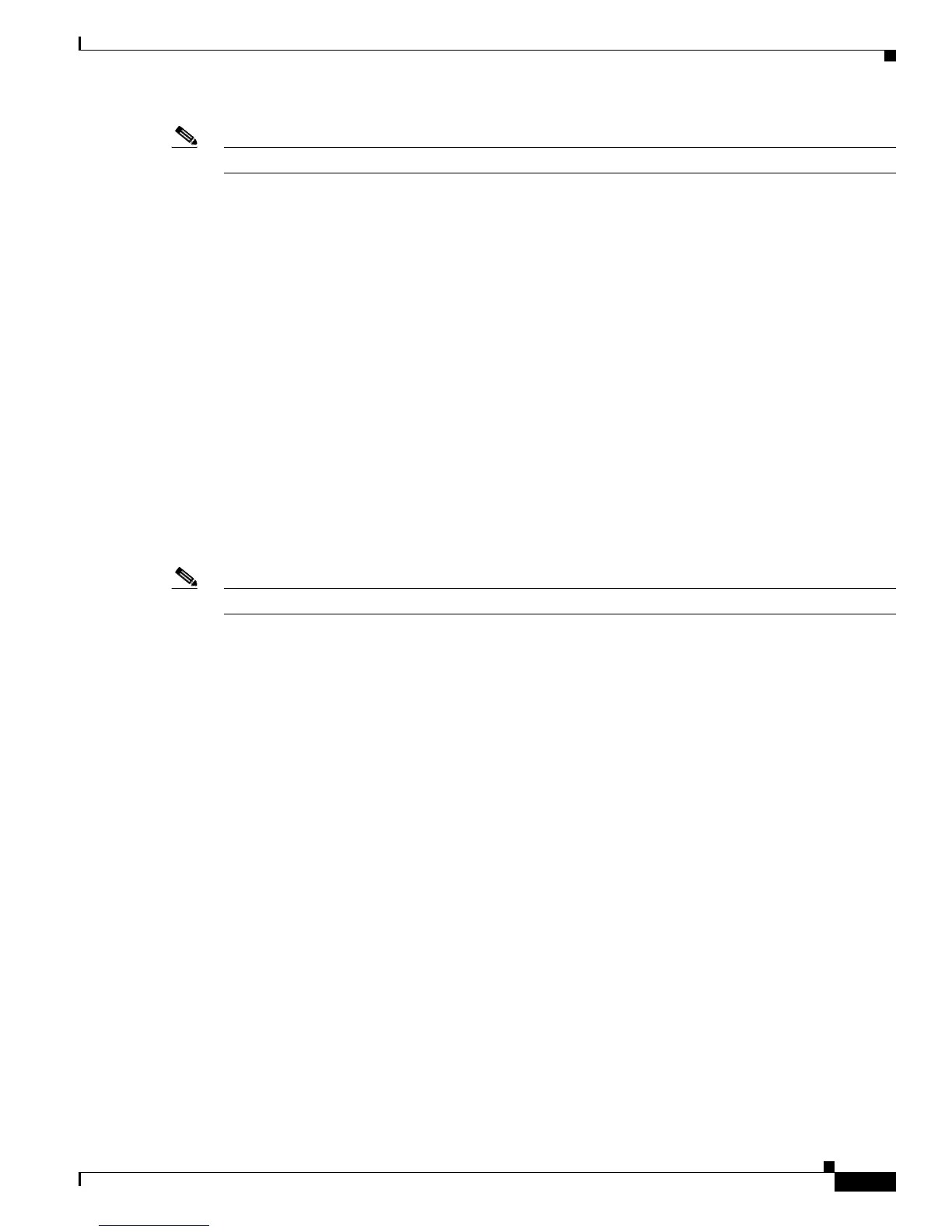33-13
Cisco ME 3400 Ethernet Access Switch Software Configuration Guide
OL-9639-07
Chapter 33 Configuring QoS
Understanding QoS
Note You can also enter the match criteria as match vlan 100 200 300 with the same result.
Switch(config)# policy-map child policy-1
Switch(config-pmap)# class dscp-63 voice
Switch(config-pmap-c)# police cir 10000000 bc 50000
Switch(config-pmap-c)# conform-action set-cos-transmit 5
Switch(config-pmap-c)# exceed-action drop
Switch(config-pmap-c)# exit
Switch(config-pmap)# class dscp-1 data
Switch(config-pmap-c)# set cos 0
Switch(config-pmap-c)# exit
Switch(config-pmap)# class dscp-23 video
Switch(config-pmap-c)# set cos 4
Switch(config-pmap-c)# set ip precedence 4
Switch(config-pmap-c)# exit
Switch(config)# policy-map parent-customer-1
Switch(config-pmap)# class customer-1-vlan
Switch(config-pmap-c)# service-policy ingress-policy-1
Switch(config-pmap-c)# exit
Switch(config)# interface fastethernet0/1
Switch(config-if)# switchport mode trunk
Switch(config-if)# service-policy input customer-1-ingress
Switch(config-pmap-c)# exit
Note Each per-port, per-VLAN parent policy class, except class-default, can have a child policy association.
See the “Configuring Per-Port Per-VLAN QoS with Hierarchical Input Policy Maps” section on
page 33-48 for configuration information, including configuration guidelines and limitations.
Table Maps
You can use table maps to manage a large number of traffic flows with a single command. You can
specify table maps in set commands and use them as mark-down mapping for the policers. You can also
use table maps to map an incoming QoS marking to a replacement marking without having to configure
a large number of explicit matches and sets. Table maps are used only in input policy maps.
Table maps can be used to:
• Correlate specific CoS, DSCP, or IP precedence values to specific CoS, DSCP, or IP precedence
values
• Mark down a CoS, DSCP, or IP precedence value
• Assign defaults for unmapped values
A table map includes one of these default actions:
• default default-value—applies a specific default value (0 to 63) for all unmapped values
• default copy—maps all unmapped values to the equivalent value in another qualifier
• default ignore—makes no changes for unmapped values

